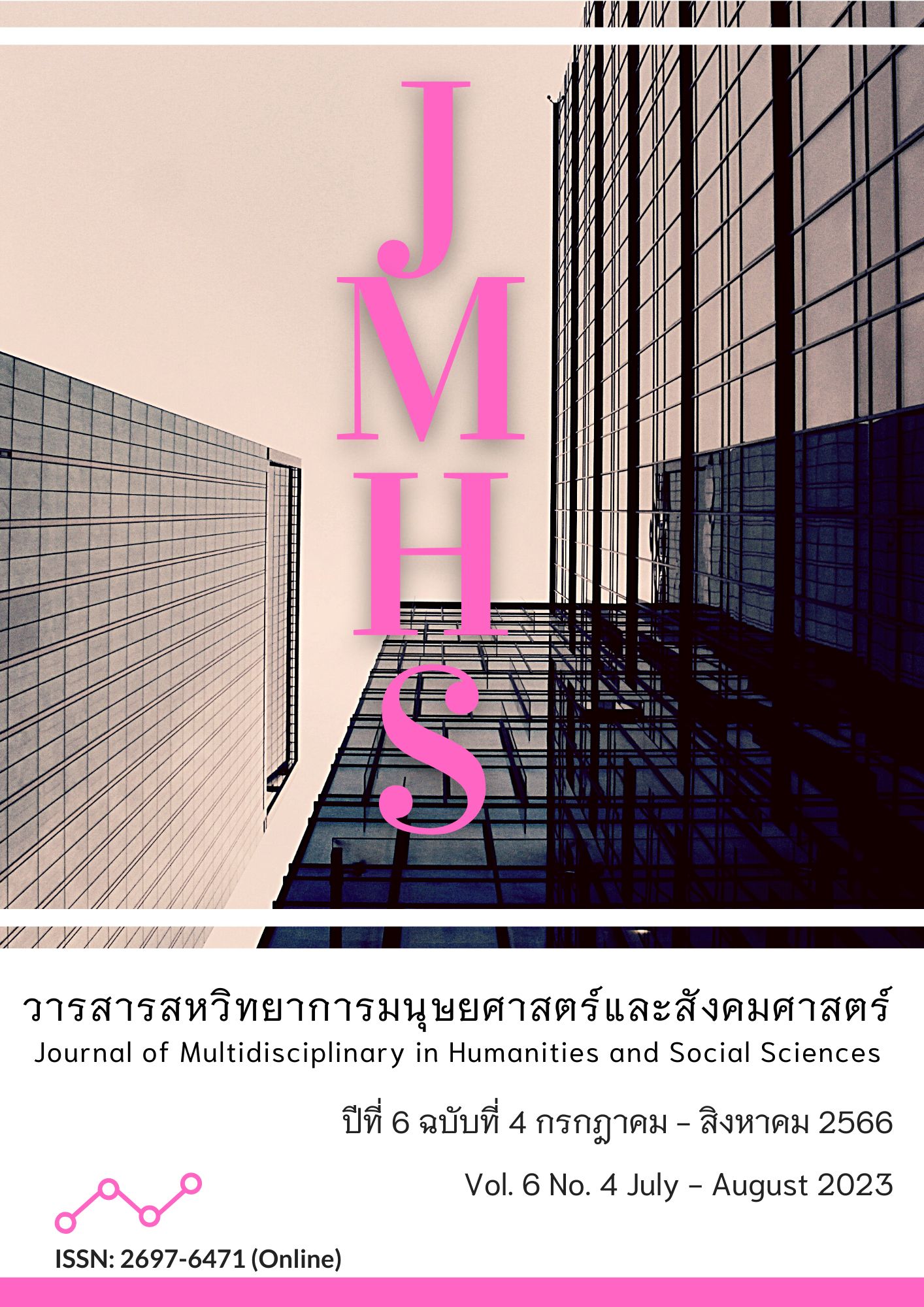Drums: Musical Instruments in the Way of Life of the People of Ahi Sub-District, Tha Li District, Loei Province
Main Article Content
Abstract
This article aimed to present stories about folk drums in Ahi Sub-district, Tha Li District, Loei Province, which are regarded as the most sacred musical instruments of the community. In each temple and in the homes of community leaders or community spiritual leaders, different types of drums are made for use in specific and ceremonial contexts. including Klong Pel, Klong Ging, Klong Hang, Klong Rammana, Klong Pang, and Klong Bang Pla Daek. The role of drums can be classified into two categories: 1) the roles of drums in specific group contexts; it is not related to any ritual. 2) The role of the drum in the ritual context related to community activities and traditional events. Folk drums of Ahi sub-district are valuable to the community in terms of preservation, usage, making process, materials for making craftsmanship, and promoting local arts and culture with the community. In which the various knowledge about folk drums of Ahi sub-district is also related to the way of life, Buddhism, beliefs, craftsmanship, and traditions, leading to merging with the ways of the community. Cause love and unity among the people in the community. The Department of Cultural Promotion and the Provincial Cultural Office should establish a project to promote and preserve such intangible cultural heritage by participating in various celebration activities in the district and the province. Collect and store wisdom and heritage information. Creating a local curriculum and transferring knowledge to local youth In order to preserve and continue the drums and traditions of Ahi sub-district residents.
Article Details

This work is licensed under a Creative Commons Attribution-NonCommercial-NoDerivatives 4.0 International License.
Views and opinions appearing in the Journal it is the responsibility of the author of the article, and does not constitute the view and responsibility of the editorial team.
References
ธิดา โมสิกรัตน์. (2531). “การเล่นกับชีวิต วัฒนธรรมและคติชนวิทยา” ใน เอกสารการสอนชุดภาษาไทย 8 (คติชนวิทยาสําหรับครู). (พิมพ์ครั้งที่ 2). นนทบุรี: มหาวิทยาลัยสุโขทัยธรรมาธิราช.
ประพิมพร สมนาแซง, ผการัตน์ รัฐเขตต์, และ สุมาลี รัตนปัญญา. (2529). อาหารตามธรรมชาติของชาวบ้านในภาคตะวันออกเฉียงเหนือ. กรุงเทพฯ: โครงการศึกษาภาวะเศรษฐกิจและสังคมของกสิกรในระบบเกษตรน้ำฝน มหาวิทยาลัยขอนแก่น.
มูลนิธิจุมภฏ พันธุ์ทิพย์. (2563, 1 มกราคม). การสนับสนุนการอนุรักษ์พิณเปี๊ยะ และเครื่องดนตรีหายากในล้านนา. สืบค้นเมื่อ 17 กุมภาพันธ์ 2566, จาก http://www.chumbhot-pantip.org/web/index.php?f=pinpia
มูลนิธิสารานุกรมไทยสำหรับเยาวชน. (ม.ป.ป.). คุณค่า และความสำคัญของ ภูมิปัญญาไทย. สืบค้นเมื่อ 17 กุมภาพันธ์ 2566, จาก http://saranukromthai.or.th/sub/book/book.php?book=23&chap=1&page=t23-1-infodetail05.html
สัญญา สิทธิ. (2565). ผู้นำทางด้านจิตวิญญาณของชุมชน. สัมภาษณ์, 20 มีนาคม.
สำนักงานราชบัณฑิตยสภา. (ม.ป.ป.). คุณค่า. สืบค้นเมื่อ 17 กุมภาพันธ์ 2566, จาก https://dictionary.apps.royin.go.th/
เสลี่ยง สิทธิ์เทียมทอง. (2565). ผู้นำชุมชนทางด้านการท่องเที่ยว. สัมภาษณ์, 20 มีนาคม.


